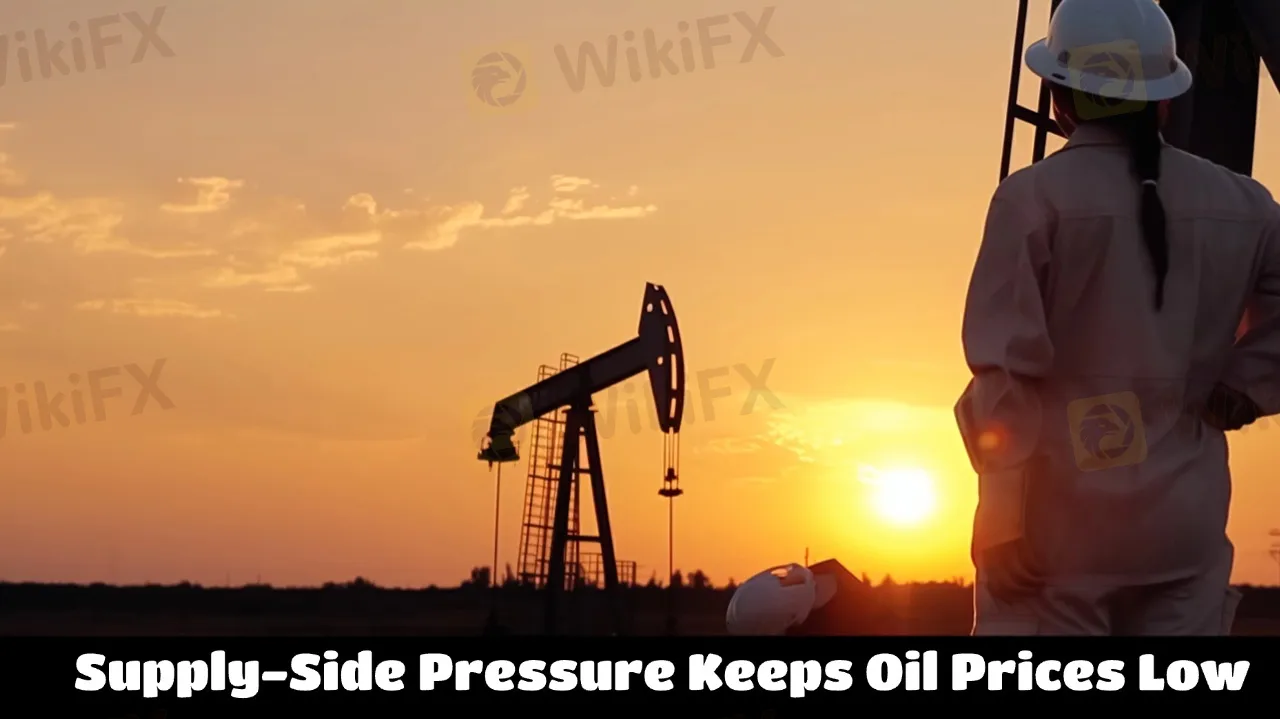简体中文
繁體中文
English
Pусский
日本語
ภาษาไทย
Tiếng Việt
Bahasa Indonesia
Español
हिन्दी
Filippiiniläinen
Français
Deutsch
Português
Türkçe
한국어
العربية
Supply-Side Pressure Keeps Oil Prices Low
Abstract:Oil prices are facing supply-side pressure, and their future trends remain highly uncertain, as geopolitical and economic factors intertwine to influence the market.

Recently, international oil prices have slightly declined, primarily due to Russia agreeing to temporarily stop attacking Ukraine's energy infrastructure. This ceasefire agreement has raised expectations of Russia's oil potentially returning to the market, thus exerting downward pressure on oil prices. Brent crude futures fell by 0.2%, settling at $70.44 per barrel, while U.S. WTI crude futures dropped by 0.2%, to $66.75 per barrel.
Since the outbreak of the Russia-Ukraine conflict, Russian oil exports have been restricted by sanctions, leading to a reduction in supply. With the ceasefire agreement, the market generally expects that if the situation further eases, sanctions could be relaxed, allowing Russian oil supply to increase, which would place downward pressure on oil prices. However, President Putin has only agreed to temporarily stop attacking Ukraine's energy infrastructure, and a comprehensive ceasefire agreement has not been reached, leaving the situation uncertain.
Furthermore, instability in the Middle East continues to affect oil prices. U.S. actions against Yemen's Houthi rebels, Israeli airstrikes on Gaza, and other conflicts have intensified concerns over potential disruptions to oil supply, which has limited the downward movement in oil prices.
Future Oil Price Outlook
In the short term, oil prices may fluctuate within a range, influenced by global economic conditions, geopolitical risks, and other factors. The market will closely monitor the progress of negotiations between Russia and Ukraine, as well as the situation in the Middle East, which may escalate further. If there are more significant supply disruptions, oil prices may rebound quickly.
In the medium to long term, oil prices will continue to face considerable uncertainty. The global economic outlook, changes in demand, and fluctuations in supply will keep influencing the market. Even if Russian oil supply increases, ongoing conflicts in the Middle East and uncertainties in the U.S. economy will continue to put pressure on oil prices. Investors must respond flexibly, stay alert to policy changes and market dynamics, and seize the right opportunities to buy or sell.

Disclaimer:
The views in this article only represent the author's personal views, and do not constitute investment advice on this platform. This platform does not guarantee the accuracy, completeness and timeliness of the information in the article, and will not be liable for any loss caused by the use of or reliance on the information in the article.
Read more

Risk Involved with Cabana Capital – Every Trader Should Know
Cabana Capital has changed its name and logo, basically everything about its identity. This seems a bit suspicious, and it's something you should definitely be concerned about. In this article, you’ll learn about the red flags that every trader needs to watch out for.

CME International Records a Massive Jump in Forex Volumes
CME International recorded a record surge in its foreign exchange trading volumes during the second quarter. Check out its performance across products and markets.

Scam Brokers Exposed! FCA Warns Traders to Stay Safe
If you are into forex trading, you need to protect your money from investment scams. Many scam brokers are active in the market now. The FCA, a reputed financial regulator, has issued a list of unlicensed brokers you need to stay away from.

New to Forex Trading in India? Here's How You Can Start and Maximize
Want to begin your forex trading journey in India? Here's a guide that will help you open and close trading positions effectively, resulting in enhanced returns and minimized risks.
WikiFX Broker
Latest News
US Government Interest Grows in Victory Metals’ Rare Earths Supply
How Are Trade Policies Affecting the Aluminum Market?
RM71,000 Lost in a Share Scheme That Never Existed
Scammed by a Click: He Lost RM300,000 in a Month
Manual vs. Automated Forex Trading: Which One Should You Choose?
Revealing Factors That Help Determine the Gold Price in India
Why Regulatory Compliance Is the Secret Ingredient to Trustworthy Forex Brokers
Pentagon to become largest shareholder in rare earth miner MP Materials; shares surge 40%
Delta shares jump 12% after airline reinstates 2025 profit outlook as CEO says bookings stabilized
Delta shares jump 13% after airline reinstates 2025 profit outlook as CEO says bookings stabilized
Currency Calculator


